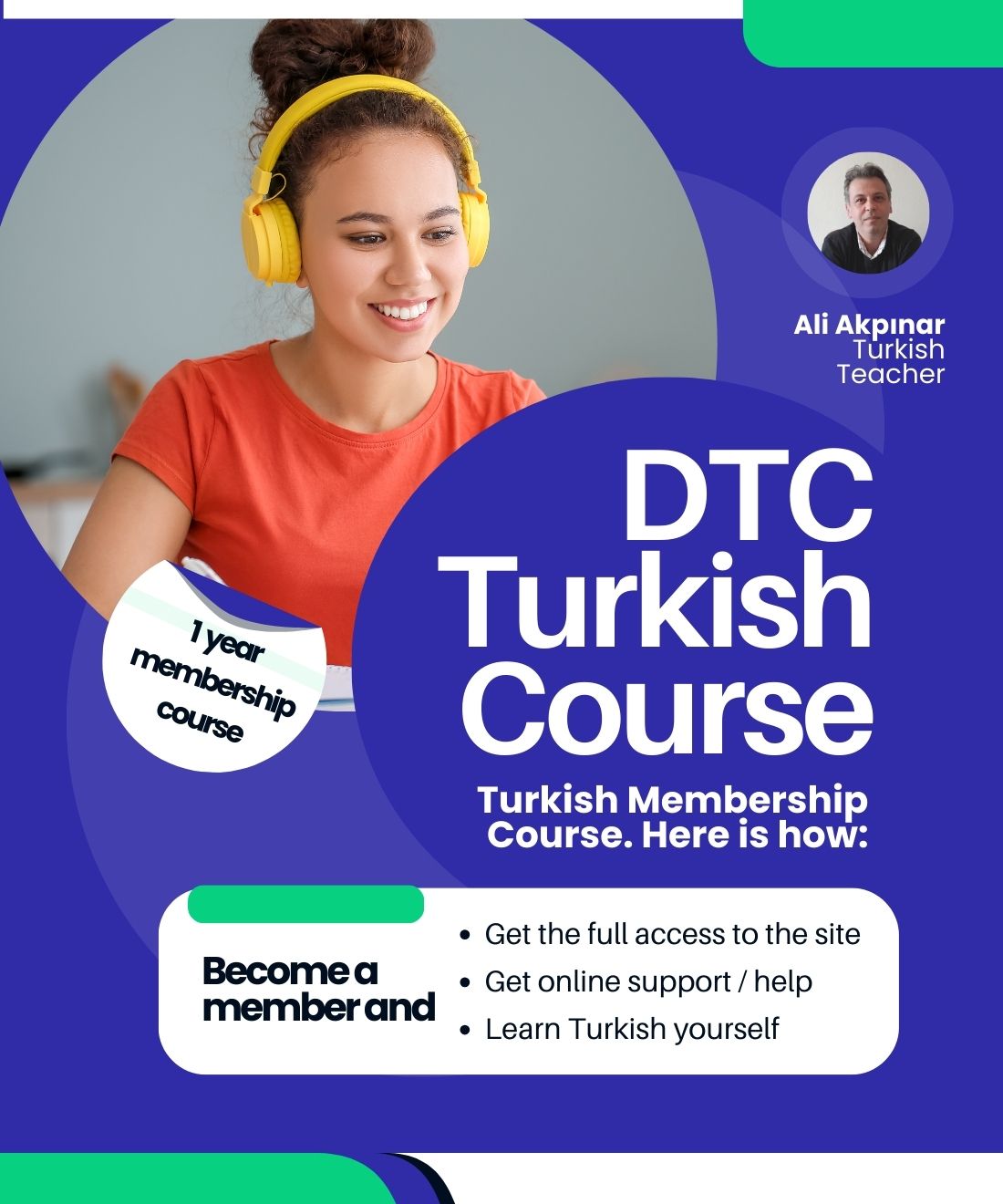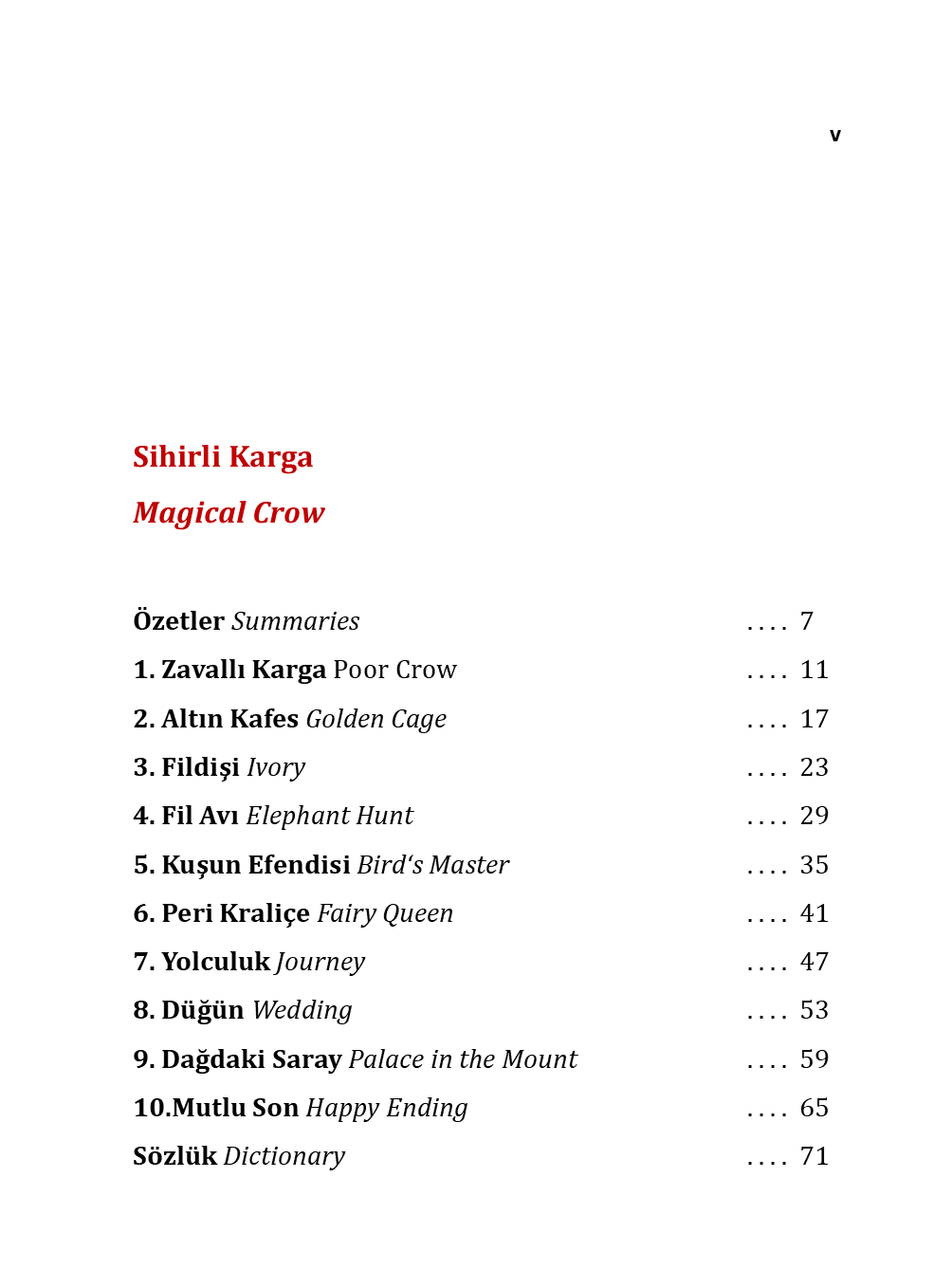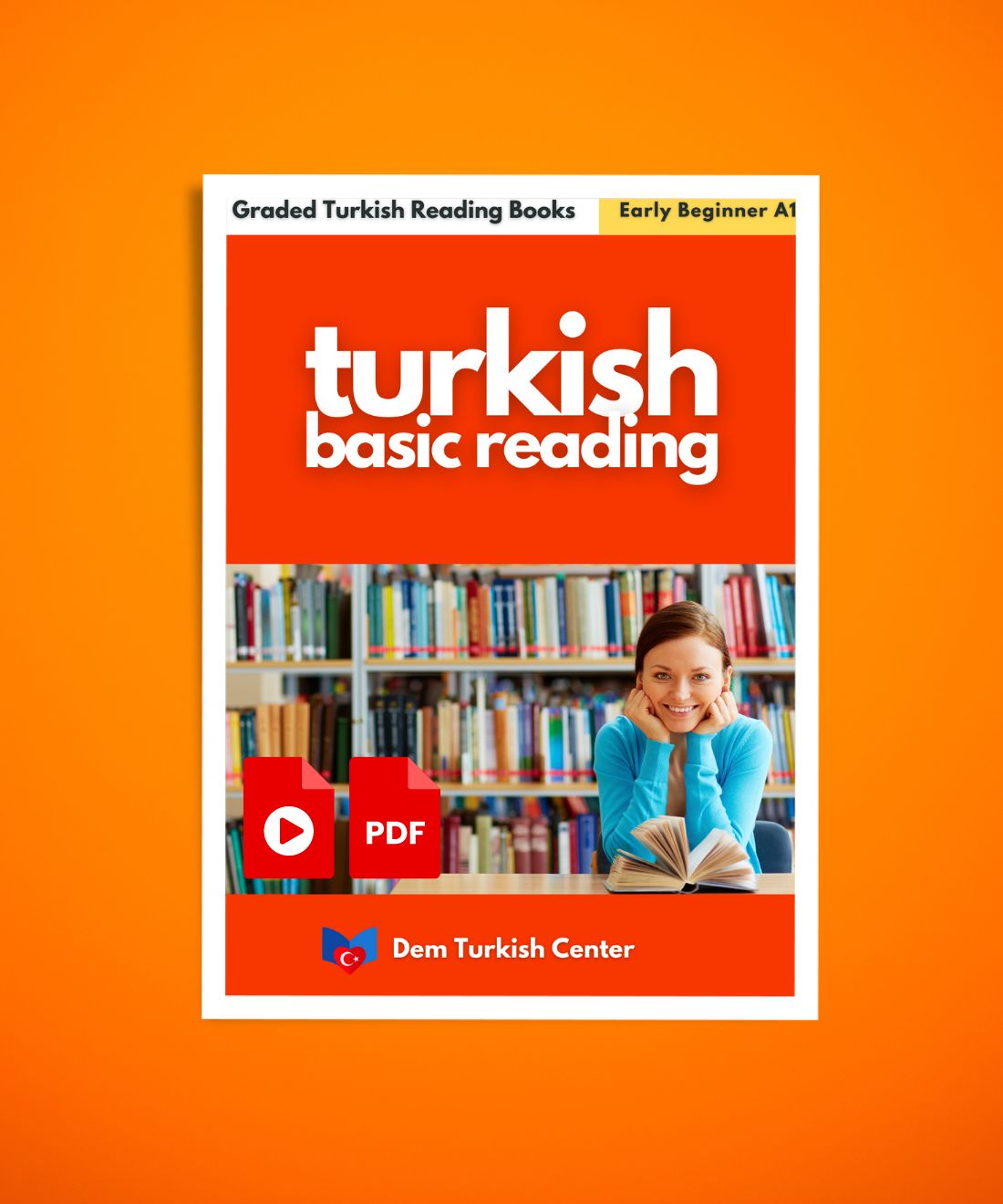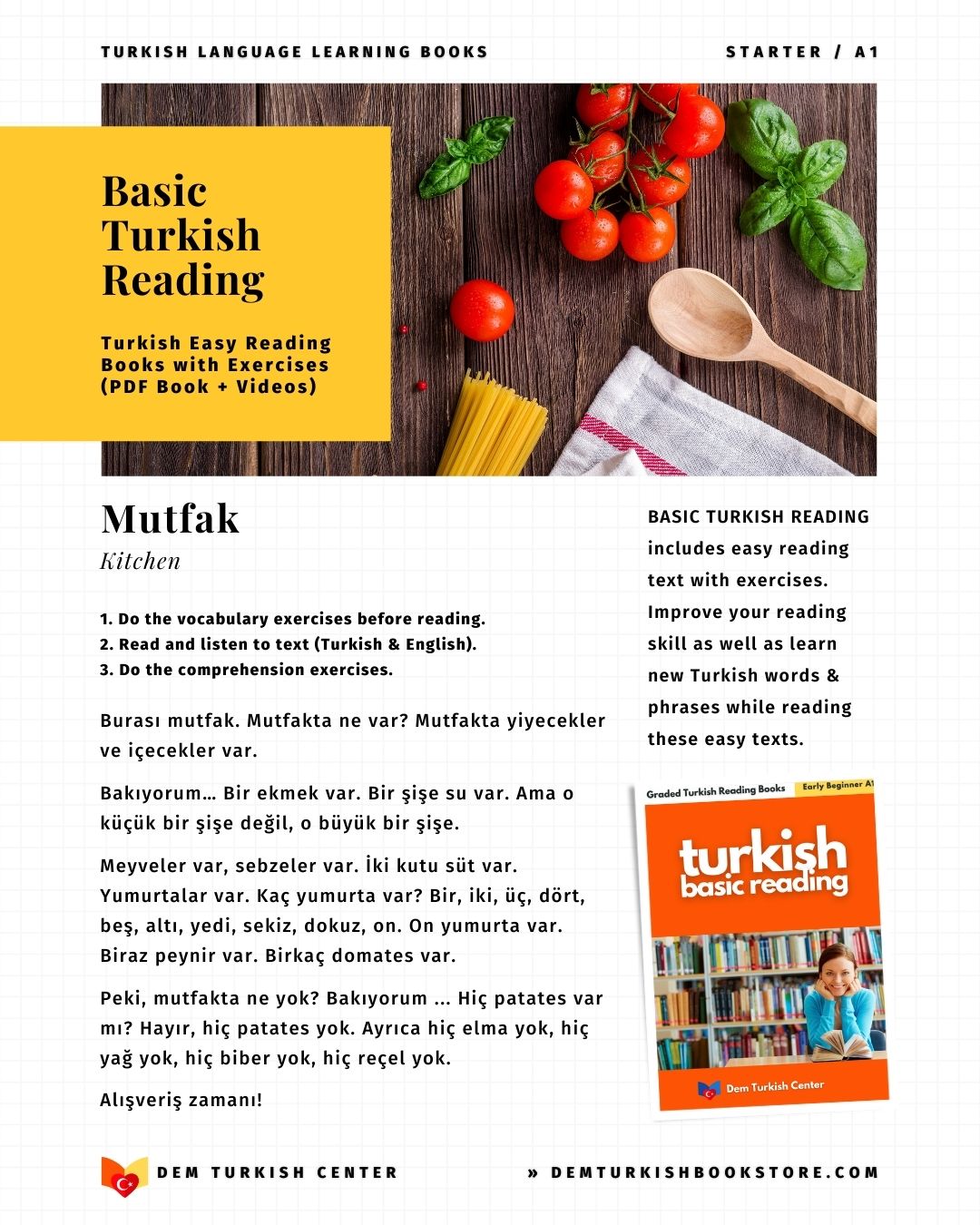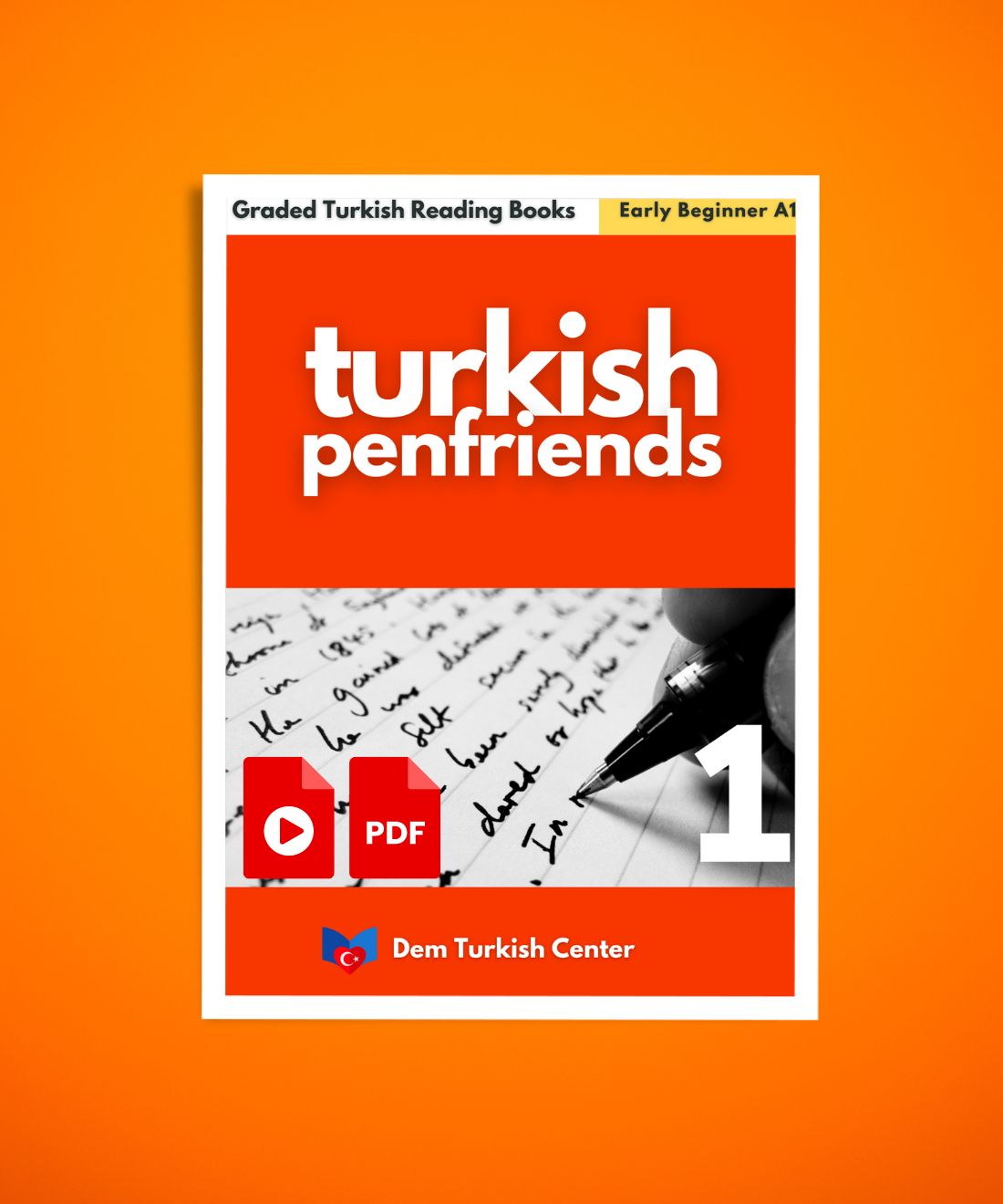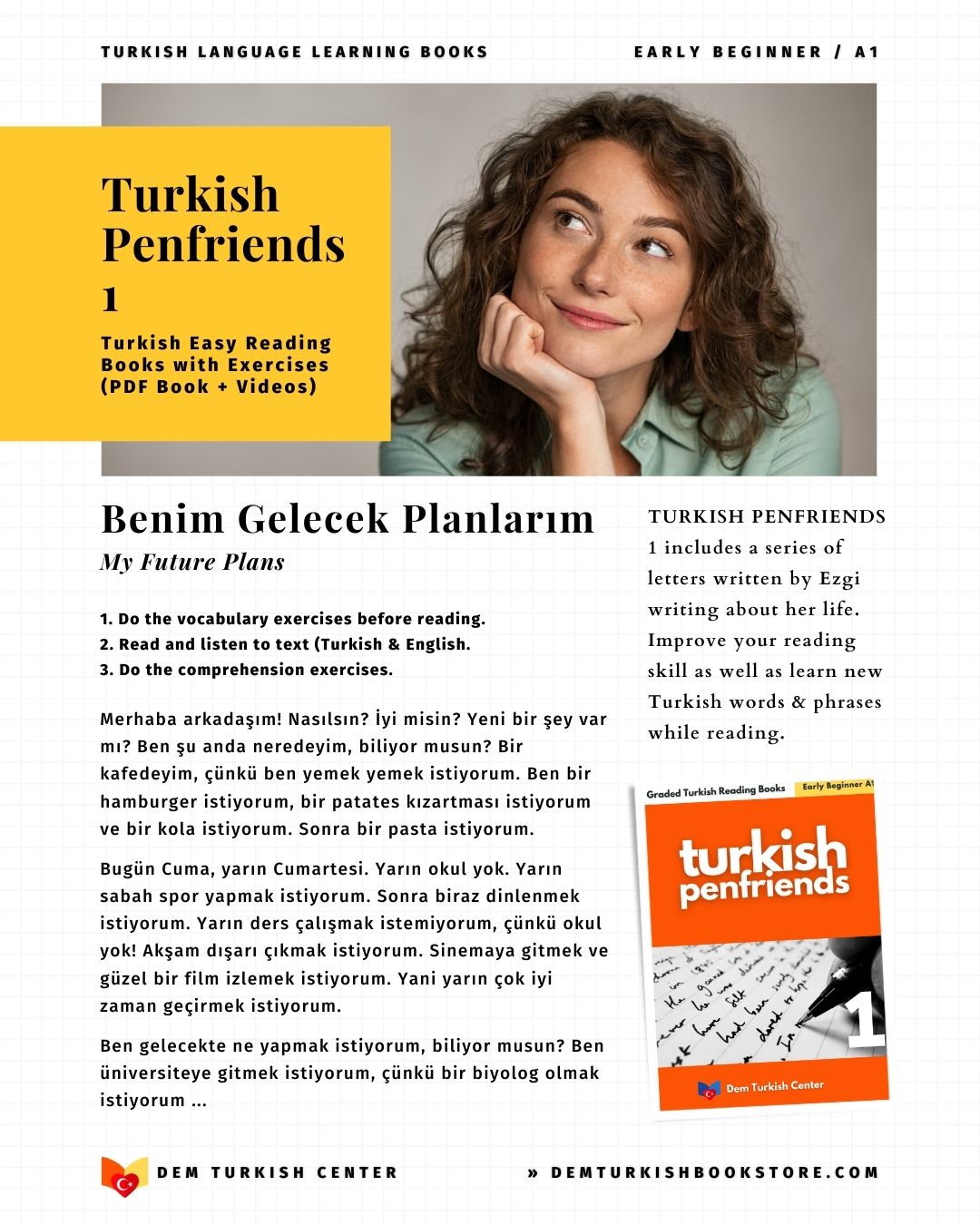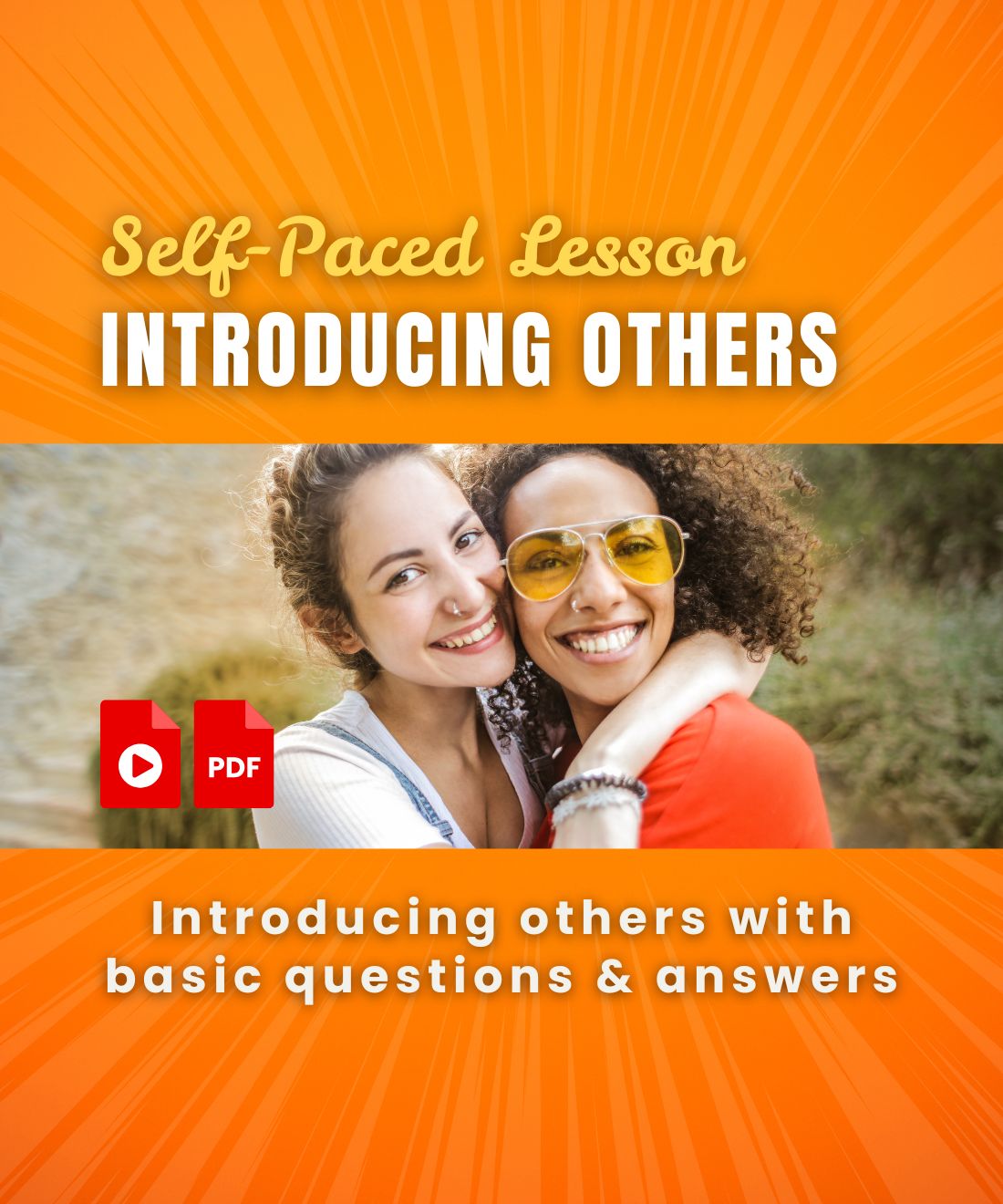
How to speak Turkish in 10 simple steps
Do you want to learn how to speak Turkish? Here’s a step-by-step guide to help you learn how to speak Turkish in 10 simple steps:
STEP 1
Learn the Turkish alphabet
The Turkish alphabet consists of 29 letters, 21 consonants, and 8 vowels. It's based on the Latin script, with some unique characters like "ç", "ş", "ğ", and "ı".
Here are a few key differences:
"Ç" sounds like "ch" as in "chocolate".
"Ş" sounds like "sh" as in "sheep".
"Ğ" (soft "g") elongates the preceding vowel, not pronounced itself.
"I" is pronounced like a short "uh", different from "i" (normal "ee" sound).
Spend time practicing the alphabet and learning its sounds, which will make reading and pronunciation easier.
Learn the Turkish alphabet with this lesson!
STEP 2
Master Basic Pronunciation
Turkish is a very phonetic language, meaning words are pronounced as they're written. Here are a few rules to keep in mind:
Vowel harmony in Turkish
Turkish words follow strict vowel harmony rules, meaning suffixes will change depending on the vowels in the root of the word (either front or back vowels).
Learn the vowel harmony in Turkish with this lesson!
Stress patterns in Turkish
In most Turkish words, the stress falls on the last syllable. Practicing pronunciation early will help you sound more natural.
STEP 3
Start with Essential Phrases in Turkish
Learn basic greetings and phrases to start speaking right away:
Merhaba - Hello, Nasılsın? - How are you? Teşekkür ederim - Thank you, Lütfen - Please, Evet/Hayır - Yes/No, Affedersiniz - Excuse me, Hoşça kal - Goodbye ...
These will give you confidence and help you navigate basic conversations.
Download "Turkish Speaking Practice Course 1 A1
STEP 4
Learn Personal Pronouns in Turkish
Turkish has subject pronouns that can be dropped in conversation, but it’s still important to know them:
Ben - I, Sen - You (singular and informal), O - He/She/It, Biz - We, Siz You (formal or plural), Onlar - They ...
Once you understand the pronouns, you can start forming simple sentences.
Learnt he pronouns in Turkish with this lesson!
STEP 5
Understand Basic Sentence Structure in Turkish
Turkish follows a "subject-object-verb (SOV)" sentence structure. For example:Ben elma yiyorum. I am eating an apple.
Here, “Ben” (subject), “elma” (object), “yiyorum” (verb). Practice forming simple sentences with this structure. As you get more comfortable, add more elements to the sentence, but always keep in mind the verb comes at the end.
STEP 6
Learn Numbers and Time in Turkish
Numbers are essential in any language. Start by learning numbers 1-10:
1 - Bir, 2 - İki, 3 - Üç, 4 - Dört, 5 - Beş, 6 - Altı, 7 - Yedi, 8 - Sekiz, 9 - Dokuz, 10 - On ...
Learn the numbers in Turkish with this lesson!
Additionally, learning how to tell time will help you with everyday conversations. Learn phrases like:
Saat kaç? - What time is it?, Saat üç. - It's three o'clock...
STEP 7:
Verb "To Be" and Conjugation
Turkish doesn’t have an exact equivalent for the verb “to be” in present tense. Instead, it is expressed through suffixes added to the subject. For example:
Ben bir öğretmenim. I am a teacher.
Sen bir öğrencisin. You are a student.
O bir doktor. He/she is a doctor.
Focus on the personal suffixes that change depending on the subject (pronoun).
Download this worksheet: "Verb To Be (Affirmative) in Turkish"
Download this worksheet: "Verb To Be (Negative & Question) in Turkish"
Step 8Master Question Words in Turkish
Start forming questions with common question words:
Ne - What, Kim - Who, Nerede - Where, Ne zaman - When, Nasıl - How ...
You can practice with basic questions like:
Bu nedir? What is this?
Nereye gidiyorsun? Where are you going?
Learn basic questions in Turkish with this lesson!
STEP 9
Learn Present Tense in Turkish
The most commonly used verb tense for beginners is the present continuous tense (which expresses ongoing actions).
To form it, take the verb root and add the continuous suffix (-iyor/-ıyor/-üyor/-uyor), followed by the personal suffix. For example:
"Yapmak" is "to do" → "Ben yapıyorum" is "I am doing."
"Gelmek" is "to come → "Sen geliyorsun" is "You are coming."
This is an essential tense for daily communication.
Download this worksheet: "Present Tense (Affirmative) in Turkish"
Download this worksheet: "Present Tense (Negative & Question) in Turkish"
STEP 10
Practice Basic Conversations in Turkish
Use the knowledge from the above steps to engage in simple conversations. Start with:
Nerelisin? Where are you from? Kaç yaşındasın? How old are you? Ne iş yapıyorsun? What do you do for work? ...
The key here is consistency. Speak as much as possible, listen to native speakers, and don't be afraid to make mistakes. Try to immerse yourself in Turkish through apps, videos, or language exchanges.
Immerse yourself
Surround yourself with Turkish content like TV shows, podcasts, and music to develop a feel for the language.
Use language apps
Apps like Duolingo, Memrise, and Babbel are great for daily practice.
Be consistent
Make it a habit to practice daily. Even 10-15 minutes of practice can make a big difference over time.
By following these steps, you’ll develop a solid foundation in Turkish and be able to engage in basic conversations quickly.
Thank you for your interest and visiting Dem turkish Center bookstore!






